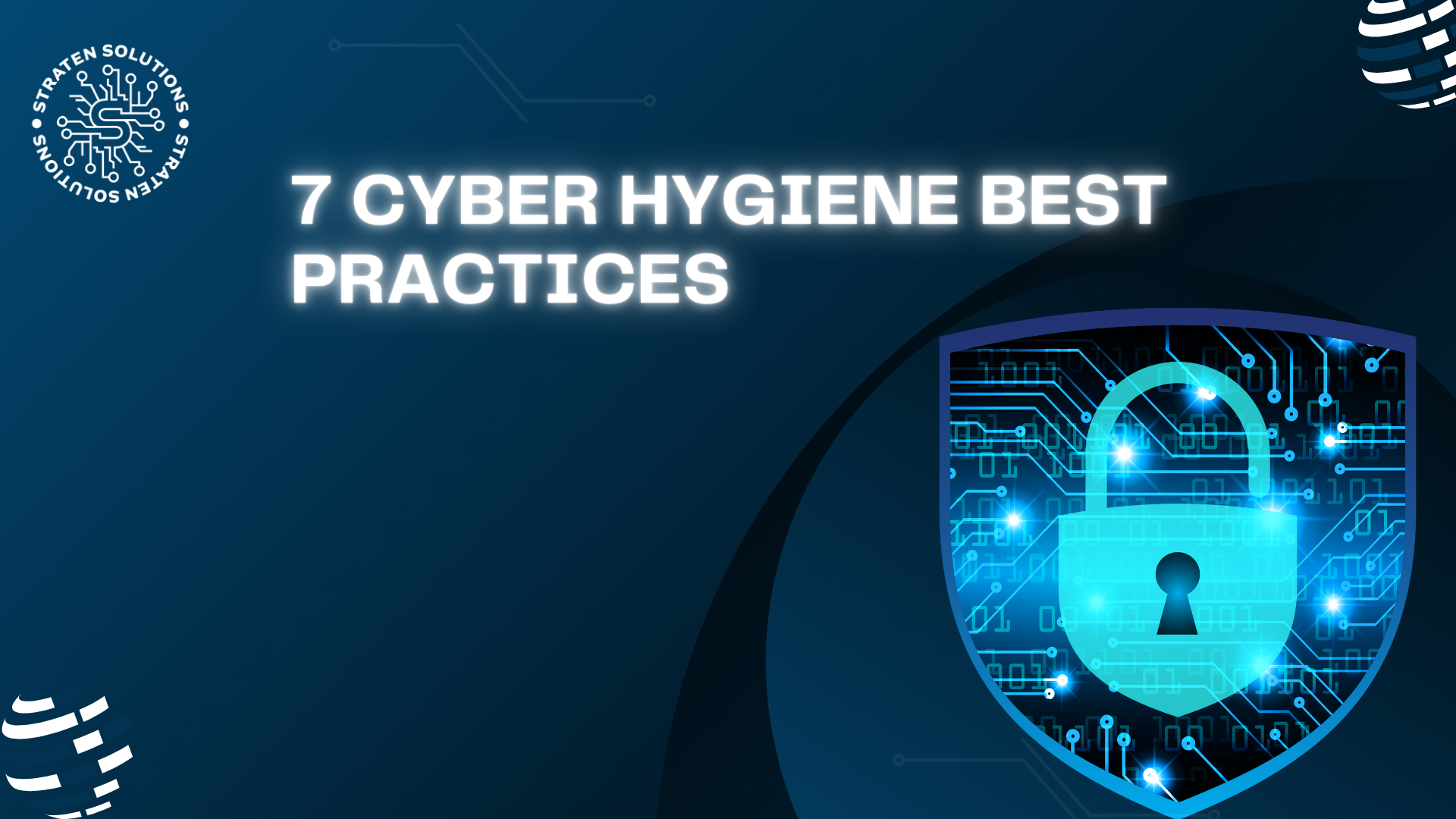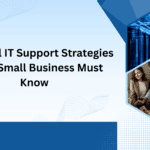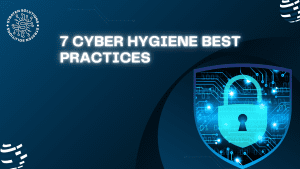
In today’s world, cyber threats are always changing and getting more advanced. It’s important to have strong cyber hygiene to protect your digital life. Just like personal hygiene keeps you healthy, cyber hygiene practices can help keep your data and devices safe from attacks and unauthorized access.
1. Use Strong, Unique Cyber Passwords
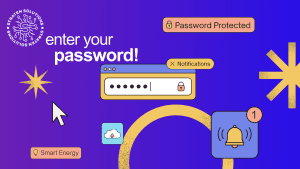
Why It Matters:
A strong password is your first line of defense against unauthorized access. Weak or reused passwords are prime targets for hackers, making it crucial to employ robust and unique credentials for each account.
Best Practices:
- Complexity: Create passwords that mix uppercase and lowercase letters, numbers, and special characters. Aim for a minimum of 12 characters.
- Uniqueness: Avoid using the same password for multiple sites. Each account should have a distinct password.
- Password Managers: Use a password manager to generate, store, and manage complex passwords securely. This tool helps you keep track of various passwords without the risk of forgetting them.
2. Enable Multi-Factor Authentication (MFA)
Why It Matters:
Multi-Factor Authentication (MFA) is a security measure that requires multiple forms of verification before granting access to an account. It goes beyond just using a password, also requiring additional proof of identity, such as a fingerprint scan, a one-time code sent to a mobile device, or a smart card. This means that even if a password is compromised, unauthorized access is significantly more difficult. MFA provides an added layer of security, making it an essential tool for protecting sensitive information and accounts from cyber threats.
Best Practices:
- Types of MFA: Combine something you know (password), something you have (mobile device), and something you are (biometrics) for comprehensive security.
- Implementation: Activate MFA for all critical accounts, including email, banking, and work-related systems.
- Backup Codes: Keep backup codes in a secure location to ensure you can access your accounts if your primary MFA method is unavailable.
3. Keep Software Up to Date
Why It Matters:
Outdated software can be a major security threat because it may have vulnerabilities that cybercriminals can exploit to access systems and data without authorization. To protect the integrity of your system, it’s essential to regularly apply updates and patches from software vendors to address these security flaws.
Best Practices:
- Automatic Updates: Enable automatic updates for your operating system, applications, and antivirus software to ensure you receive the latest security patches.
- Manual Checks: Regularly check for updates for software that doesn’t support automatic updates.
- Update Notifications: Pay attention to update notifications and apply patches as soon as they are available to address potential vulnerabilities.
4. Implement Regular Backups
Why It Matters:
Regular backups are essential for protecting against data loss due to ransomware attacks, hardware failures, or accidental deletions. Backups ensure that you can restore your data to a previous state if necessary.
Best Practices:
- Backup Frequency: Schedule backups to occur regularly, such as daily or weekly, based on the importance of the data.
- Backup Types: Use a combination of on-site and off-site backups, including cloud storage, to enhance data recovery options.
- Testing Backups: Periodically test your backups to confirm they are functional and can be restored without issues.
5. Educate and Train Users
Why It Matters:
Human error often leads to security breaches. Training users to recognize and avoid threats is crucial for minimizing risks and enhancing overall security.
Best Practices:
- Regular Training: Conduct cybersecurity awareness training sessions regularly to keep users informed about the latest threats and safe practices.
- Simulated Attacks: Use simulated phishing and other attack scenarios to test and reinforce users’ ability to identify and respond to threats.
- Clear Policies: Develop and communicate clear cybersecurity policies and procedures to guide users in safe digital practices.
6. Use Firewalls and Antivirus Software
Why It Matters:
Firewalls and antivirus software play crucial roles in safeguarding computer systems and networks from malicious threats. Firewalls monitor and control incoming and outgoing network traffic, acting as a barrier between a trusted internal network and untrusted external networks. Antivirus software, on the other hand, detects and removes malicious software such as viruses, worms, and Trojan horses. When used together, firewalls and antivirus software form a key part of a robust security approach, helping to prevent unauthorized access and potential damage to computer systems.
Best Practices:
- Firewalls: Enable firewalls on both network routers and individual devices to filter out malicious traffic and protect against external threats.
- Antivirus Software: Install reputable antivirus software and keep it updated to detect and remove potential threats.
- Regular Scans: Perform regular system scans to identify and address any malware or vulnerabilities.
7. Secure cyber Network Connections
Why It Matters:
Securing your network is crucial to protect sensitive information from interception or unauthorized access through unsecured network connections.
Best Practices:
- Encryption: Use strong encryption protocols, such as WPA3 for Wi-Fi, to secure network traffic and protect data in transit.
- VPNs: Employ Virtual Private Networks (VPNs) when accessing public or unsecured networks to secure your data and maintain privacy.
- Network Segmentation: Implement network segmentation to limit access to sensitive data and systems, reducing the risk of widespread breaches.
Ready to Take Control of Your Cybersecurity?
Implementing these cyber hygiene best practices is a proactive step towards securing your digital life. Don’t wait for a breach to happen—start strengthening your cyber defenses today. For more tips and personalized advice on enhancing your cybersecurity, contact us now
Stay safe online!


